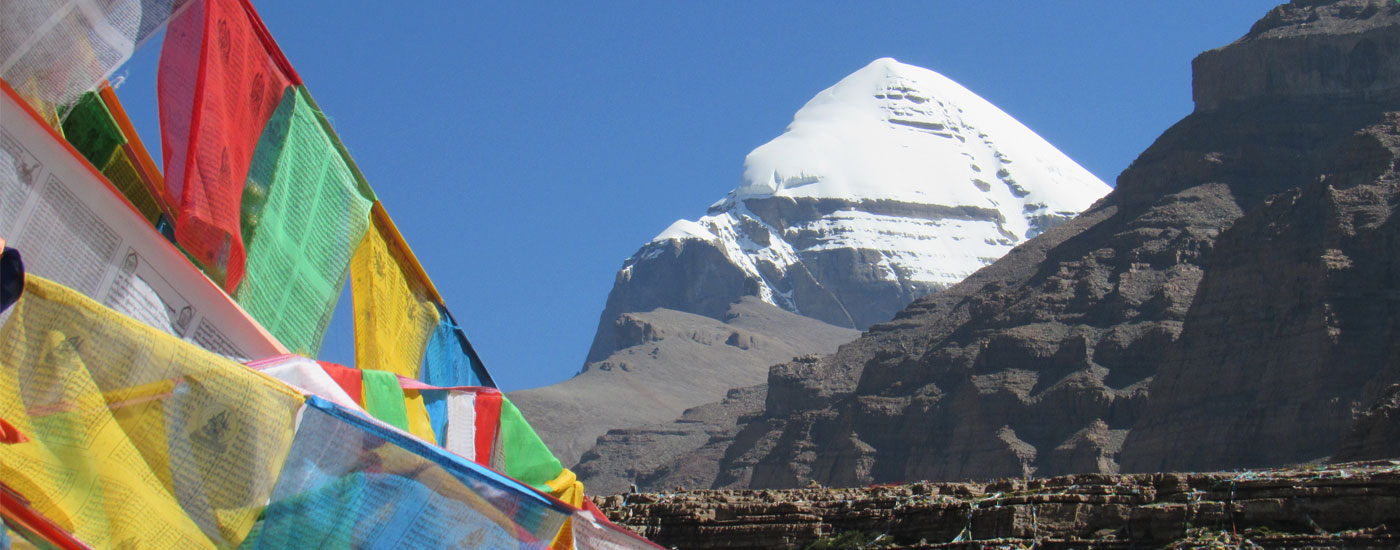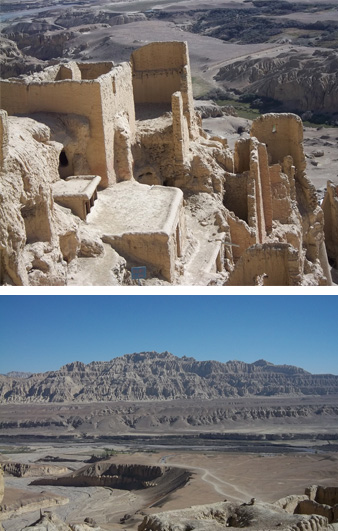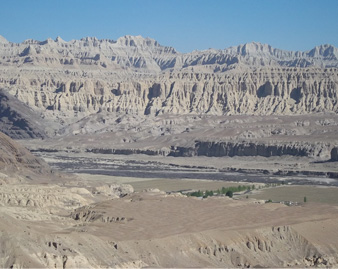
Guge is an old kingdom which was once sovereign estate that later disrupted after the civil revolt and the invasion of the allied armies of eight foreign countries in western Tibet. It was centered in present day Zenda Country, the Ngari prefecture, Tibet Autonomous Region. The civil combat and foreign attacks shivered this once well-off state. Researchers are still trying to investigate more about this legendary kingdom from its remaining.
In 10th century, a wing of heir of a nearby collapsed Kingdom endowed this kingdom. It was ruled by 16 kings with armies of tens of thousands of soldiers for more than 700 years. Then conflicts began at this kingdom from power disputes within the imperial family resulting anxiety and disorder in the society and induced civil revolt in 1660s. With the support of the ruler of Ladakh (the present Kashmir), the neighboring country, King’s brother got victory over the disordered state. There is an important role of Guge Kingdom in an economic and cultural development of Tibet as well as it encouraged Buddhism, and blossom its versions from Guge into the heart of Tibet.
In the present days, the Ruins of Guge Kingdom boosts around the sides of a mountain more than 300 m. (984 ft.) high occupying over 400 rooms and 800 caves with some fortresses, secret paths, pagodas, arm storerooms, granaries and all kinds of burial places. There is a city wall that surrounds the ruins and a fortress marks each of the corners. Ancient Palaces, temples and local residences expand from the top to the bottom. There is secret hidden roads to reach atop, an outline designed to indicate king’s supremacy and to ensure the protection and safety of the palaces. The first group of Cultural Relics of National Importance has included the ruins of Guge Kingdom under the Protection of the State due to its great research value and historical significance.
There are several valuable artifacts in The White Temple, Red Temple, Samsara Temple, Imperial Palace, and Assembly Palace. Among which the complete and most valuable artifacts remaining are mainly the pictures of Shakyamuni, the king, queen, prince and other royal servants. Apart from that, in the sanctuary pictures of the cultivation of male and female mysterious Buddhism can be seen. We can see Dozens of nude Dakinis paintings on the margin. Mural’s colors and lines are similar to those of the Mogao caves in Dunhuang City, Gansu Province.
The snow-capped rocky peak Mount Kailash situated in the autonomous region of China, Tibet is believed to be a place where founders of Tibetan Buddhism, Jainism and Bonpo religions once meditated and resided. As Hindus and Buddhists all over the world also worship this peak as the exact "Center of the Universe" Jains believes that their first Saint obtains Liberation: “Freedom” meditating at this region.
Mostly Hindu people believe this black peak to be the abode of supreme Hindu God, Lord Shiva and his wife Parvati. For a Hindu, to make the arduous pilgrimage to Kailash and have the divine view (Darshan) of Shiva’s abode is to attain release from the clutches of ignorance & delusion of life. Tibet, a sacred home to Mount Kailash and Mansarovar Lake, is a famous pilgrimage destination and an epitome of beauty and awe to the rest of the world. For Buddhist to make the challenging pilgrimage is to feel the peace of the surrounding which they believe the meditating spot of Lord Shakyamuni. A travel company, Monterosa Treks and Expedition at Nepal, makes very pleasant & smooth Yatra to these divine places every year. Please join with us and take our best services for this trip. You are heartily welcome. Athiti Devo Bhava.
Meeting point: As soon as you arrive to Tribhuvan International Airport, our staffs will welcome you and take you to hotel.
 Day 01: Arriving in Kathmandu airport and transfer to hotel
Day 01: Arriving in Kathmandu airport and transfer to hotel
Day 02: Half day guided sightseeing Kathmandu & Briefing
Day 03: Drive to Trisuli, Ghatte Khola overnight 2 star hotel
Day 04: Ghatte to Kerung Bazaar and overnight 3 star hotel
Day 05: Drive Kerung to Saga bazaar & stay in 3 star hotel
Day 06: Drive to Hor& round Mansarovar, stay mud house
Day 07: Drive to Guge valley Tolling/ Zenda 290km & lodge
Day 08: Full day visit Guge Kingdom Ruin and Guest house
Day 09: Drive to Darchen & overnight stay in four star hotel
Day 10: Drive to Yam Dwar and start trek to Dirapuk- lodge
Day 11: Trek to Dorma La pass 5636m. Zuthulpuk &lodge
Day 12: Trek to Chongdo, drive to Darchen and Saga hotel
Day 13: Drive Saga to Kerung valley & stay in 3 Star hotel
Day 14: Drive to Kerung & border than drive to Kathmandu
Day 15: Transfer to Kathmandu airport for final departure
10 -15 Persons, per person USD 2695
16 - 20 Persons, per person USD 2500
21 persons or more, per person USD 2395
Single Supplementary USD 300 (single room)
 Arrival in Kathmandu airport Nepal & transfer to hotel
Arrival in Kathmandu airport Nepal & transfer to hotel  Kathmandu: 5 Star Deluxe Hotel Radisson, Crown Plaza or Similar
Kathmandu: 5 Star Deluxe Hotel Radisson, Crown Plaza or Similar
Ghatte Khola; 2-star hotel Kailash or Similar hotel
(Full meal Vegetarian Breakfast, Lunch, dinner as follow itinerary)
Kerung: 3-star hotel Pilgrimage or Similar
Saga: 4 star Western Post, Hotel Mulinsen or Similar
Manasarovar Lake: Guest house or mud houses
Zenda / Tolling: Normal Guest House
Darchen: 4 star Kailash Himalayan
Dirapuk: Normal guest house (Parikrama first day)
Zuthulpuk: Normal guest house (very basic) (Parikrama second day)
New Tingri: Tingri roof of the World Grand hotel or similar
Our company is your Kailash Manasarovar Yatra / tour dream holiday!!
Om Namo Shivaya ! Jaya Bhole Nath !! Har Har Mahadev!!!
What our client's says about Kailash yatra and tour operator